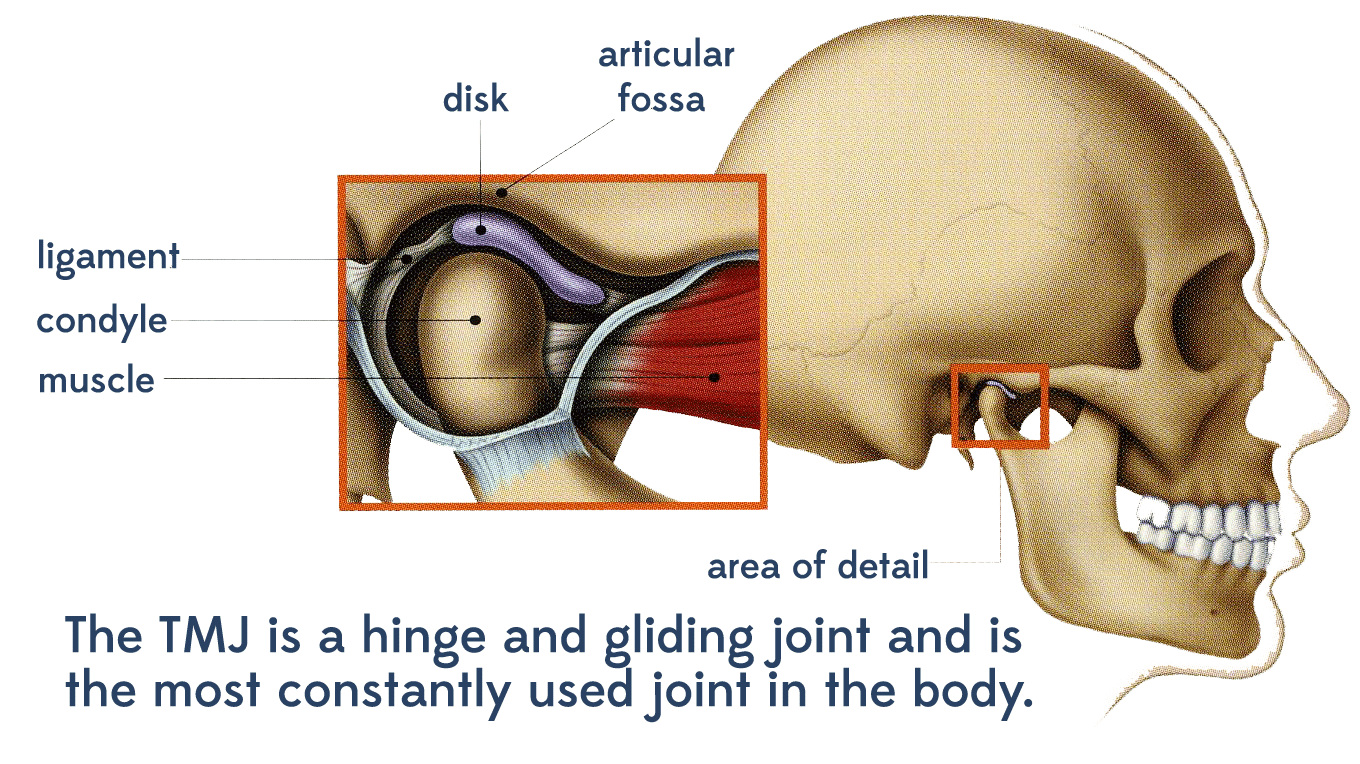Jaw Pain Treatment: Chiropractic TMJ Management & Advice. Would You Like To Speak To A Therapist? Call (24/7): 1300-003-777.
The jaw is referred to as the temporomandibular joint and it’s essentially a hinge joint between the jaw and the lateral aspect of the skull. The jaw normally freely moves forwards, backwards, upwards, downwards and sideways. The TMJ is the most used joint of the human body. It’s estimated that it moves thousands of times every day as we talk, yawn, chew and swallow. Signs that you’re suffering from TMJ dysfunction include muscle tightness around the face and jaw, headaches, ear pain, neck pain, stiffness, vertigo, dizziness, jaw clicking/locking/grating, inability to open your mouth normally, difficulty talking/chewing and tinnitus. The causes of jaw pain are wide ranging and may include trauma, whiplash, dental procedures, teeth grinding, arthritis, stress, jaw misalignment, dislocation and muscle tightness.
Temporomandibular Joint Examination
Proper assessment of the temporomandibular joint must be performed by a practitioner that is trained to do so. A comprehensive assessment includes:
- Thorough case history review involves a discussion with your Chiropractor. This enables them to gain understand your problem. Questions that you may be asked include addressing aggravating activities, when the problem initially presented and if there was a specific event that caused it.
- Physical examination includes assessing the jaw, skull and cervical spine. Your Chiropractor will inspect and palpating these structures to assess whether they’re contributing to your TMJ disorder. Specific examination of the jaw involves palpating soft tissues of the face (muscles of mastication) assessing pain, tenderness and tonicity, palpation of the TMJ joint, muscle strength and jaw range of motion.
- Orthopaedic & neurological examination may be warranted to rule out potential differential diagnoses.
Chiropractic TMJ Treatment
There are a variety of fantastic techniques which Chiropractors can use to treat jaw pain. Please below for details regarding particular therapies which you may receive in order to manage your problem:
- TMJ manipulation is a similar technique to traditional Chiropractic manipulation however it’s specifically applied to the jaw to restore normal position, alignment, movement, reduce pain and tenderness.
- TMJ joint stretching & mobilisation is a gentle technique designed to improve restricted movement.
- Activator methods uses a hand held instrument that is specific for the Chiropractic profession. Clients often refer to know the Activator as the ‘clicker’ instrument. Chiropractors use this instrument to gently improve joint function.
- Soft tissue massage to the inside and outside of the jaw assist with releasing tension and pain.
Chiropractor Jaw Pain Research
- Symptoms of TMJ dysfunction improved following specific jaw pain treatment via Activator methods Chiropractic care. DeVocht, J., & Long, C (2003). Chiropractic treatment of Temporomandibular disorders using the activator adjusting instrument: A prospective case series. Journal of Manipulative Physiological Therapeutics, 26(7); 421 – 425
- Symptoms including bilateral ear pain, tinnitus, vertigo, altered hearing acuity, headaches and jaw pain improved following temporomandibular joint and upper cervical spine Chiropractic management. Alcantara, J., Plaugher, G (2002). Chiropractic care of a patient with temporomandibular disorder and atlas subluxation. Journal of Manipulative Physiological Therapeutics, 25(1); 63 – 70

